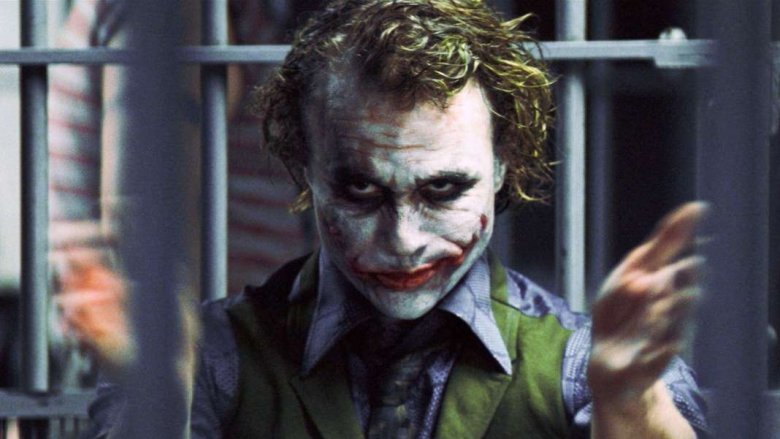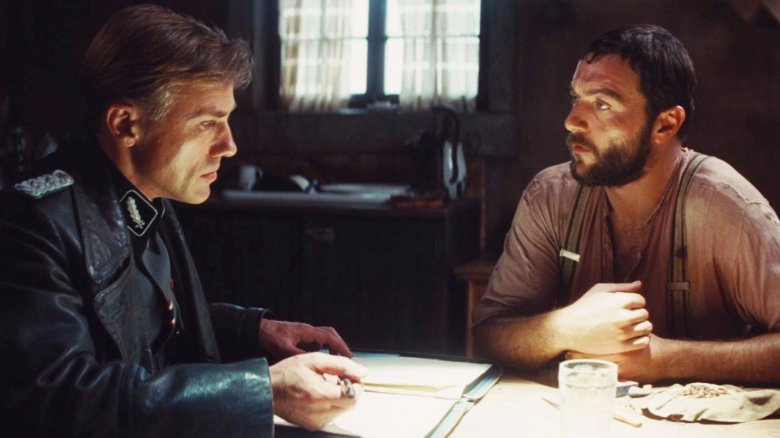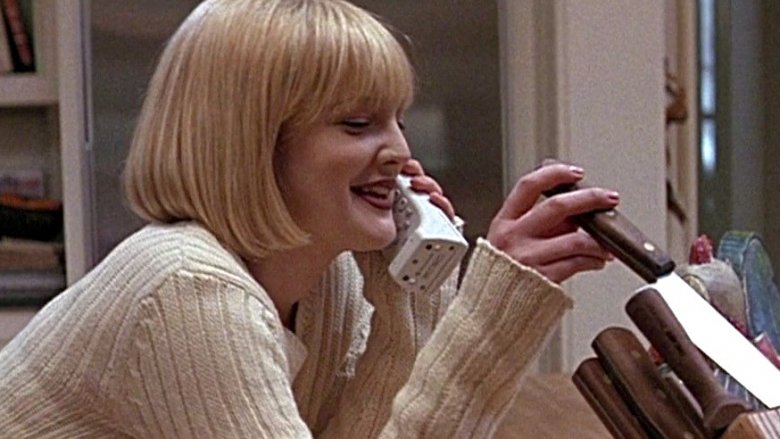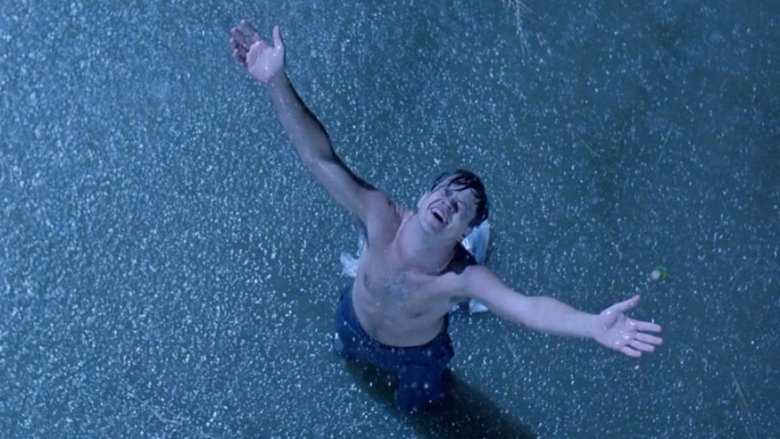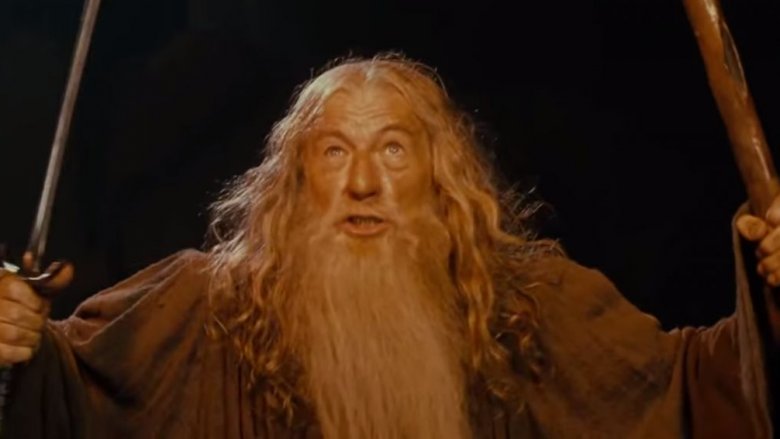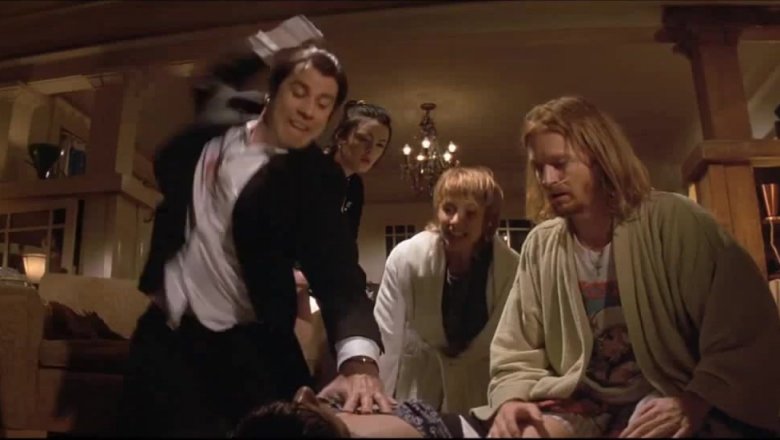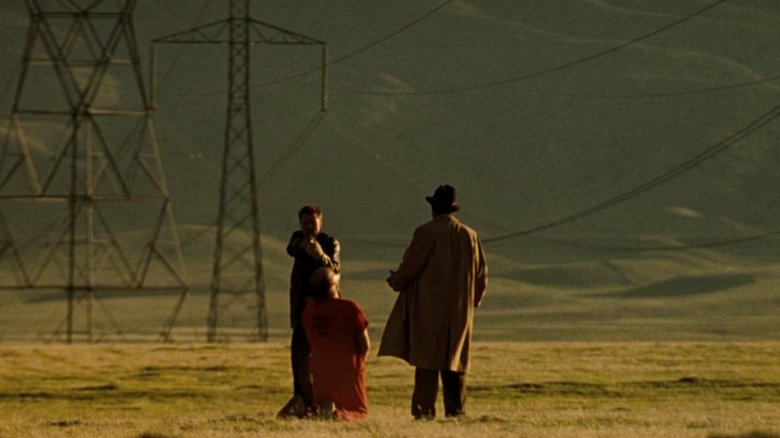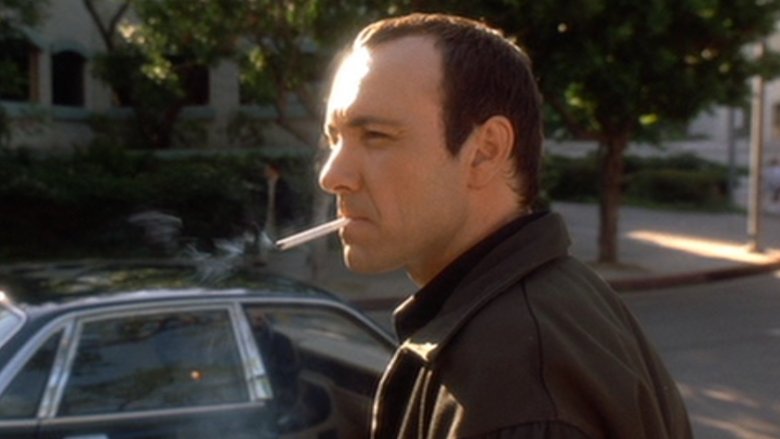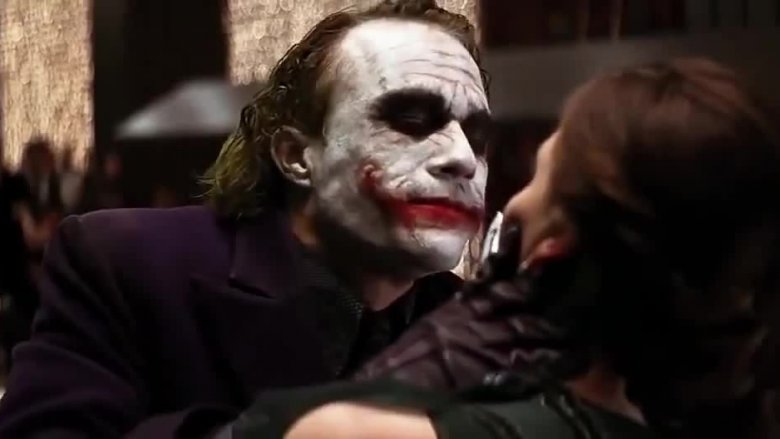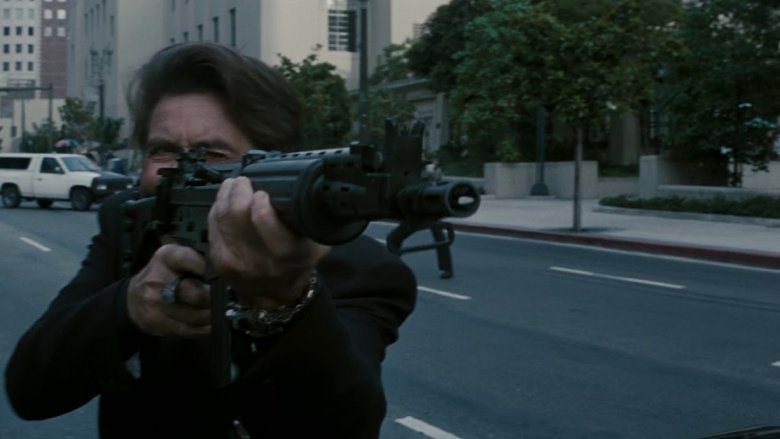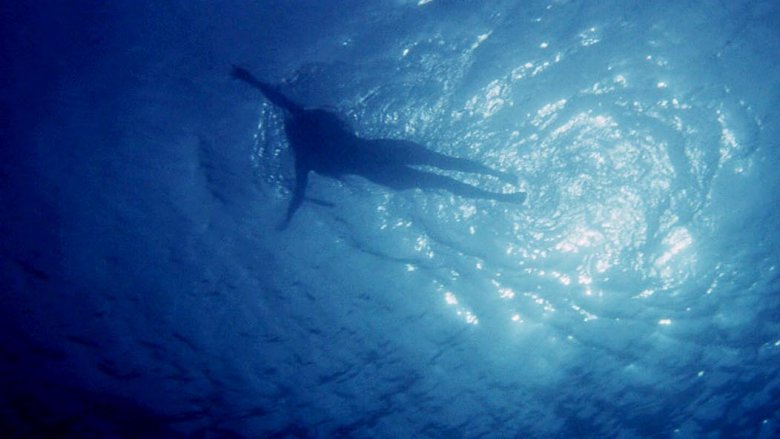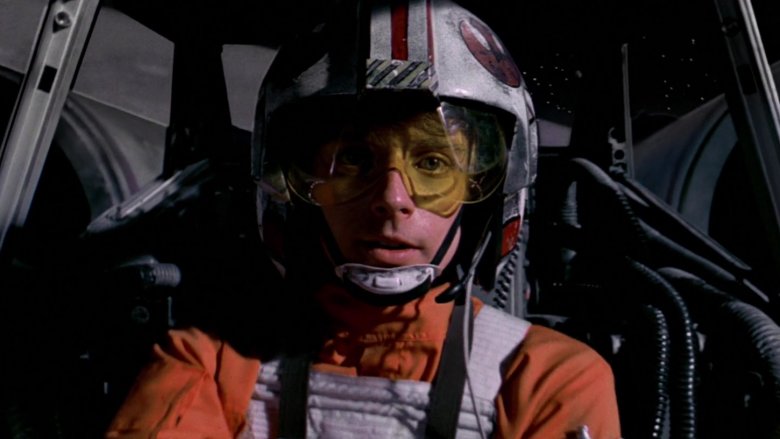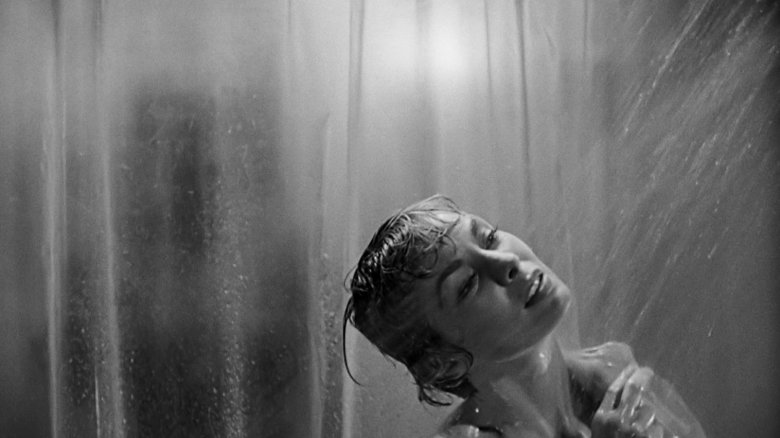Movie Scenes That Are Practically Flawless
Each of the all-time greatest films has left an impression on audiences across the world for any number of reasons, including perfect direction, excellent performances, a great soundtrack, or an impeccable script. By giving viewers indelible images they can never forget, a film can stand the test of time, creating an unforgettable experience for movie lovers.
Great films are one thing, but a truly great scene is another — a film can prove itself on the strength of its opening, ending, or climax alone if a scene is really something special. Whether it's a huge action set piece, a big emotional moment, a perfect piece of physical comedy, or a master class in creating tension, a truly amazing scene can further the story as well as stand on its own and create its own legacy. From classic Hitchcock moments to Tarantino's bloodiest shots, here are just a few movie scenes that are practically perfect, from the writing and directing to the performances and the overall execution.
Meet the Basterds
Quentin Tarantino has spent his entire career developing an irreverent and unique style, and 2009's Inglourious Basterds, from the deliberate historical inaccuracies to the misspelled title, is no exception. Set in World War II, the film tells the completely fabricated story of the Basterds, a group of soldiers determined to kill as many Nazis as possible, who must face off against the entire S.S. and eventually take Hitler down in a blaze of gunfire and actual fire.
However, they don't take down the entire Third Reich alone — they're unwittingly aided by a French Jewish woman named Shoshanna, who owns a movie theater that ultimately plays host to one of Joseph Goebbels' film premieres. In the opening scene, Shoshanna and her family are hiding from Nazi forces when Colonel Hans Landa, referred to as "The Jew Hunter," arrives to interrogate the French family who is housing the fugitives. The ensuing scene is perfectly framed and written, and thanks to one crucial shot, the tension is ramped up once you know the targeted family is hiding underneath the floorboards of the house.
A blood-curdling Scream
The 1996 slasher film Scream, just one of the many horror classics conceived by Wes Craven, was at once a love letter to horror films as well as an effective addition to the genre in its own right. Set in a small town with a history of tragic murders, the film centers on Sidney Prescott, a seemingly normal teen who starts getting mysterious phone calls as she and her friends are stalked by an unknown entity known as "Ghostface." Before Sidney even appears, there is a lengthy opening sequence featuring Drew Barrymore as Casey Becker, a teenager enjoying a night at home when she starts getting some unsettling phone calls.
At first, Casey is unfazed by these odd calls, assuming that the person on the other end of the phone is simply playing a rude prank, but before long, she starts getting nervous, and once she sees her gutted and murdered boyfriend posed in her backyard, her panic intensifies. As her parents arrive home at the end of the evening, the camera zooms in on her mutilated body hanging from a tree on the property, finally cutting to the opening credits and capping off a perfect encapsulation of both Craven's vision and the horror genre.
Andy Dufresne escapes from Shawshank
Frank Darabont's magnum opus The Shawshank Redemption (based on works by Stephen King), despite initially flopping at the box office, went on to become one of the most beloved films of the 20th century, even earning a spot on AFI's Top 100 list.
Telling the story of Andy Dufresne (Tim Robbins), a wrongfully imprisoned man serving two consecutive life sentences at the Shawshank State Penitentiary, the film paints the grimmest possible picture of prison life. Andy is brutalized every single day until he figures out a scheme where he can help financially manage the prison as well as help his fellow inmates with their money troubles.
The signature scene of the entire film is the moment when Andy escapes from the prison through a rock tunnel that took nearly 20 years to build. As he emerges from the tunnel, which is filled with human waste and filth, he stands clean and victorious in the rain, basking in a hard-fought victory the audience feels right along with him. It's a perfect moment of human triumph, and Darabont created a completely unforgettable image that will continue striking an emotional chord in viewers for years to come.
You shall not pass
Adapting the Lord of the Rings series, comprised of three novels by J.R.R. Tolkien, was no easy feat, but clearly one man was up to the job: Peter Jackson, who used his home country of New Zealand as the stand-in for Tolkien's Middle-earth. The films were critical and commercial smashes, with the final installment, The Return of the King, winning a whopping 11 Oscars at the Academy Awards.
In the first of the three films, The Fellowship of the Ring, Frodo (Elijah Wood), a timid and inexperienced hobbit of the Shire, embarks on his long journey to destroy the One Ring that could control the entire world, and during his journey with the "fellowship" of nine (made up of hobbits, men, elves, dwarves, and wizards alike), the group must cross through the dangerous Mines of Moria, home to ancient monsters that lurk far underground. When they encounter a Balrog, an enormous demon made of fire, all hope seems lost, until Gandalf (Sir Ian McKellen), a powerful wizard and Frodo's closest advisor, fights the Balrog, sacrificing himself to get Frodo and the rest of the Fellowship to safety. With still-impressive special effects, an ideal action set piece, and strong performances across the board (especially from McKellen), it's no wonder that "you shall not pass" has become a part of the cultural lexicon.
A shot to the heart and you're to blame
1994's Pulp Fiction is regarded as one of the best films of not just the 1990s, but the back half of the 20th century, thanks to director Quentin Tarantino's vision of a non-linear gangster fairytale. With an all-star cast that includes John Travolta, Uma Thurman, Samuel L. Jackson, Ving Rhames, Bruce Willis, Christopher Walken, and Tim Roth, the film follows several different stories as they eventually converge, with the entire plot happening out of order as well as beginning and ending at the exact same point during a diner robbery.
Though the film is filled with plenty of unforgettable scenes, the most memorable is arguably Mia Wallace's overdose and the aftermath that follows. Wallace, played by Thurman, snorts heroin thinking it's cocaine after an evening with Vincent Vega (Travolta); after rushing an unconscious Mia to his dealer's house, Vincent ends up stabbing her in the heart with an adrenaline-filled hypodermic needle to revive her. Between the ensuing insanity that takes place over Mia's still body and Thurman's reaction to the needle, this scene is shot and written so perfectly that you almost feel like you're a part of the action.
The original unboxing video
One of David Fincher's most highly regarded films, 1995's Se7en is a classically dark and twisting thriller from the acclaimed director, as well as one of his first big hits. Starring Morgan Freeman and Brad Pitt, the film centers on two detectives, Mills (Pitt) and Somerset (Freeman), tracking a violent and creative serial killer who taunts police by leaving his victims in deliberate arrangements meant to evoke the seven deadly sins. With each crime carefully covered up and meticulously planned, the detectives have no leads until John Doe (Kevin Spacey) arrives at the police station covered in blood to confess.
Doe then leads both detectives to a remote spot in the desert to show them his final crime, revealing that he has been guilty of the sin of envy, leading him to murder Mills' pregnant wife Tracy (Gwyneth Paltrow), and presenting Mills with Tracy's head in a box. In response, an enraged Mills shoots Doe — representing wrath and doing exactly what Doe wants. The scene, with its sepia-toned color scheme, tense music, and impeccable performances (especially from Pitt), is a master class in thrillers, especially since the audience never even sees the contents of the box. We don't need to — in fact, the scene is better with just the mental image of gore rather than a direct visual.
Meet Keyser Soze
The final moments of The Usual Suspects, the 1995 neo-noir mystery film starring Kevin Spacey as Verbal Kint, one of the sole survivors of a shootout led by a notorious crime boss named Keyser Soze, are regarded as one of the best twist endings in film history. The script focuses almost entirely on Kint's recollection of the events preceding the film, which involves a group of gangsters attempting to pull off a complicated heist in order to get revenge on the NYPD, only to be foiled by Soze, who seems more like an urban legend than a real person (Kint even tells detectives that Soze murdered his own family).
As the detectives frantically try to figure out which person in the story could possibly be Soze, Kint's bail is posted and he leaves the police station... and as he does, his physicality completely changes; though he told the detectives he had cerebral palsy, his limp goes away, and his non-functioning hand suddenly works. Back at the station, the detectives realize that Kint was Keyser Soze the entire time, but they're too late — he's already escaped. No matter how many times you've seen the film, the ending still completely works, especially once you can look back at all the clues the film laid throughout to lead viewers to solve the mystery themselves.
Why so serious?
Christopher Nolan rebooted the Batman franchise to rave reviews in 2005 with Batman Begins, but that was nothing compared to 2008's The Dark Knight — widely regarded as one of the best films of the decade, as well as the gold standard that future superhero movies would strive for. Nolan cast Heath Ledger (then mainly known for arthouse dramas and teenage romantic comedies) as the Joker to play opposite Christian Bale's Batman, and though the casting was initially controversial, the bet paid off handsomely. Tragically, Ledger passed away in January of 2008 before the film's summer release, but his performance in the film remains one of the best of all time.
There are almost too many incredible scenes featuring Ledger to narrow them down to one, but one of his best occurs when he crashes a high society gala to torment Harvey Dent (Aaron Eckhart), terrorizing guests and throwing glasses of champagne with reckless abandon. The scene is a perfect encapsulation of chaos on any scale — whether that means committing murder or simply making a mess as the Joker traverses the party, cackling as he eats off random trays and explaining his disfigured face.
If you can't stand the Heat, get out of L.A.
Michael Mann's 1995 crime film Heat boasted an all-star cast including Al Pacino, Val Kilmer, and Robert De Niro, with Pacino starring as an LAPD detective pursuing a notorious criminal (played by De Niro) as he commits a string of high-profile robberies. De Niro plans one last enormous heist — a bank robbery that would net millions for himself and his crew — amidst a personal standoff between himself and Pacino, each man understanding that they won't hesitate to kill each other despite their mutual respect. The LAPD eventually intercepts the crew, resulting in an enormous shootout between the two sides.
Shot in a hyper-realistic fashion, the robbery and shootout last more than ten minutes, with Pacino, Kilmer, and De Niro racing through the streets of Los Angeles armed to the teeth. Mann cranks up the tension by using continuous tracking shots to follow each side; he even made sure the guns were as authentic as possible, putting the actors through intense weapons training beforehand. The scene is still regarded as a career highlight for Mann, thanks to the director's clinical and attentive approach.
Taking a bite out of horror history
A great opening can perfectly set the tone for a film, and few are as famous as the sequence that opens Steven Spielberg's Jaws, the classic horror movie that made millions of people suddenly reconsider taking a dip in the ocean. The film itself, which is considered one of the best movies of all time, starred Richard Dreyfuss and Roy Scheider as a marine biologist and police chief trying to take down a man-eating great white shark that is terrorizing a resort town in New England, and though they're ultimately successful, the shark takes several lives in the process.
Thanks to an often unreliable mechanical shark on set, Spielberg ended up not showing his toothy antagonist in many scenes, creating a Hitchcock-esque thriller where the main villain's mere presence evoked fear without even appearing onscreen. This is perfectly displayed in the opening scene: after a party on the beach, a young girl and her boyfriend take a swim, during which they are both attacked and the girl is eaten by the shark. By filming crucial parts of the scene from the shark's perspective and using menacing music by John Williams (which remains one of the top film scores in history), Spielberg takes a "less is more" approach to creating this unforgettable scene.
May the Force be with you...always
What's left to say about the original Star Wars, one of the most influential and beloved films of all time? The story of Luke Skywalker, a young Jedi who must confront the Galactic Empire alongside the virtuous Rebel Alliance to defend the galaxy against the evil Darth Vader and his army, it's one of the most important movies ever made. Its success spawned an entire universe of sequels and spinoffs, creating an entire industry (when it comes to the Star Wars universe, the word "franchise" feels like an understatement). The first film released in the series, A New Hope, made worldwide stars out of Mark Hamill (who played Skywalker), Harrison Ford, and Carrie Fisher.
The film's final battle scene, the trench run at the Death Star, is among the most famous in a film arguably filled with iconic moments, and it's easy to see why: director George Lucas and his crew used mostly practical effects to create a stunning 15-minute sequence during which Luke and a squad of Alliance pilots attack the Death Star, eventually blowing the fortress-like ship to pieces by bombing an exhaust port (an apparent plot hole that caused decades of arguments). Tense, thrilling, and victorious, it's Star Wars at its very best.
That's no loofah
One of the most famous directors in history, Alfred Hitchcock is responsible for some of the most famous and unforgettable scenes in all of film — arguably led by the murder scene in Psycho. As Marion Crane, a young woman who stops at the Bates Motel, Janet Leigh seems to be the hero of the story — but in a perfect subversion of expectations, Marion is stabbed to death by an unseen attacker while taking a shower at the motel.
The scene, which has no score or music until the murder, focuses tightly on Leigh, which only increases the audience's sense of dread when they see a shadowy figure through the shower curtain. The camera then lingers on Leigh's body, eventually contrasting her open eye with the open drain, allowing for a sense of symmetry. This three-minute scene (with only 45 seconds of action) remains one of the gold standards of the horror genre, so much so that an entire documentary about it, 78/52 (the title refers to the number of setups and cuts it took to accomplish the scene), was released in 2017, offering viewers a whole new insight into this masterful cinematic moment.
